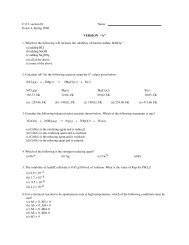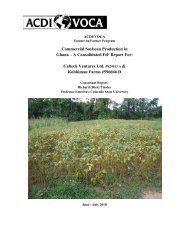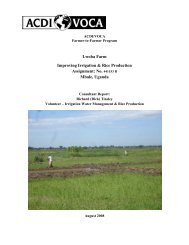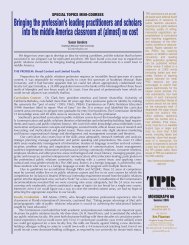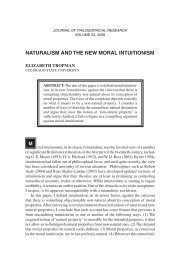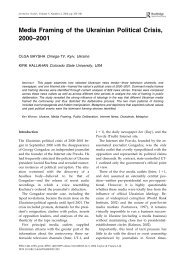Trail Log 1995-1997 - Lamar at Colorado State University
Trail Log 1995-1997 - Lamar at Colorado State University
Trail Log 1995-1997 - Lamar at Colorado State University
You also want an ePaper? Increase the reach of your titles
YUMPU automatically turns print PDFs into web optimized ePapers that Google loves.
<strong>1995</strong><br />
January 4, <strong>1995</strong>. Wednesday. Adult bald eagle flying right over campus, over the Eddy building,<br />
in clear blue sky, the only bird in sight. R<strong>at</strong>her cold we<strong>at</strong>her, snow covered ground.<br />
January 6-9. Military Veterinarians' Symposium, San Antonio Texas. Talk on wildlife on military<br />
bases. Col. Paul Barrows, their commander. S<strong>at</strong>urday, after talk, walked through the Alamo.<br />
Sunday, rented car and drove through Texas hill country to Lost Maples St<strong>at</strong>e N<strong>at</strong>ural Area. North<br />
on 281, then west on 473 to Kendalia, Sisterdale, Comfort.<br />
Lunched in a nice picnic area <strong>at</strong> Camp Verde. Lots of game fences in here, trying to keep whitetail<br />
deer on their land for hunting leases, or, in other cases, fencing in exotic species to hunt. Reached<br />
Lost Maples. This is named for Bigtooth maple, Acer grandident<strong>at</strong>um, found here (and all up and<br />
down the Sabinal River), somewh<strong>at</strong> as a disjunct. It is abundant in Utah, also in Arizona, Wyoming,<br />
reported in Montana. It is in <strong>Colorado</strong> rarely, <strong>at</strong> Mesa Verde. Hiked down the maple trail and on<br />
down the East <strong>Trail</strong> a ways. Ashe juniper, Juniperus ashei, is the common tree on hillsides. Also<br />
various oaks, Texas ash, Fraxinus texensis; Sugar hackberry, Celtis laevig<strong>at</strong>a; and others. Lovely<br />
day. Shirtsleeve we<strong>at</strong>her. Returned and spent night with Paul Barrows. Wife, Becky, daughter of<br />
Presbyterian minister in Pennsylvania. Monday early, flew home.<br />
Most of the ticks th<strong>at</strong> carry diseases go on and off warm-blooded animals three times, often the first<br />
two stages on very small mammals, like mice and voles, when the larvae are almost too small to<br />
see, like pinheads. Only the third stage do they climb higher shrubs and get onto larger mammals.<br />
The best way to pull them off is to pull gently for a minute or more; this tires their jaw muscles and<br />
they turn loose. But if you squeeze them, feces may contamin<strong>at</strong>e your fingers and then you may<br />
rub it back onto your body, in eyes, etc. Use some waxed paper to pull them, if you can.<br />
(Veterinary talk)<br />
Bald eagle. Seen <strong>at</strong> Fossil Creek Reservoir leaving for Louisiana, Chicago trip. Nice adult.<br />
February 9, <strong>1995</strong>. Thursday. Mother died. I flew to Richmond. Buried her Sunday afternoon,<br />
February 12, in bitter cold <strong>at</strong> Hebron. More in family history book.<br />
March 25. Huntington, West Virginia, trail behind art gallery, with Mary Jack. In good bloom: Rue-<br />
Anemone (Anemonella thalictroides), Toothwort (Dentaria diphylla), Bloodroot (Sanguinaria



